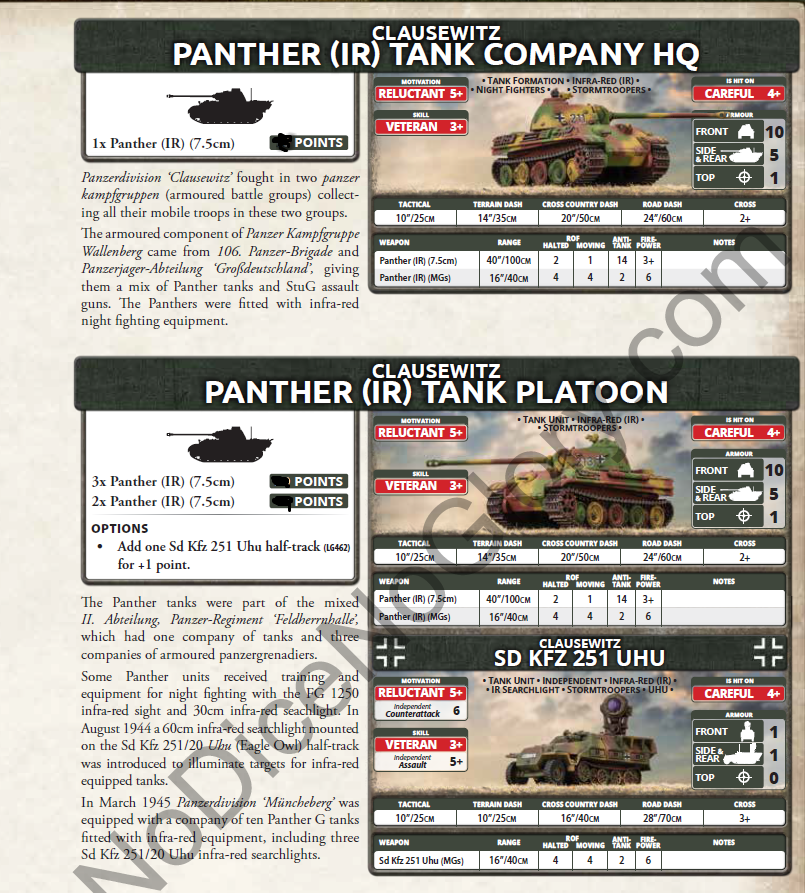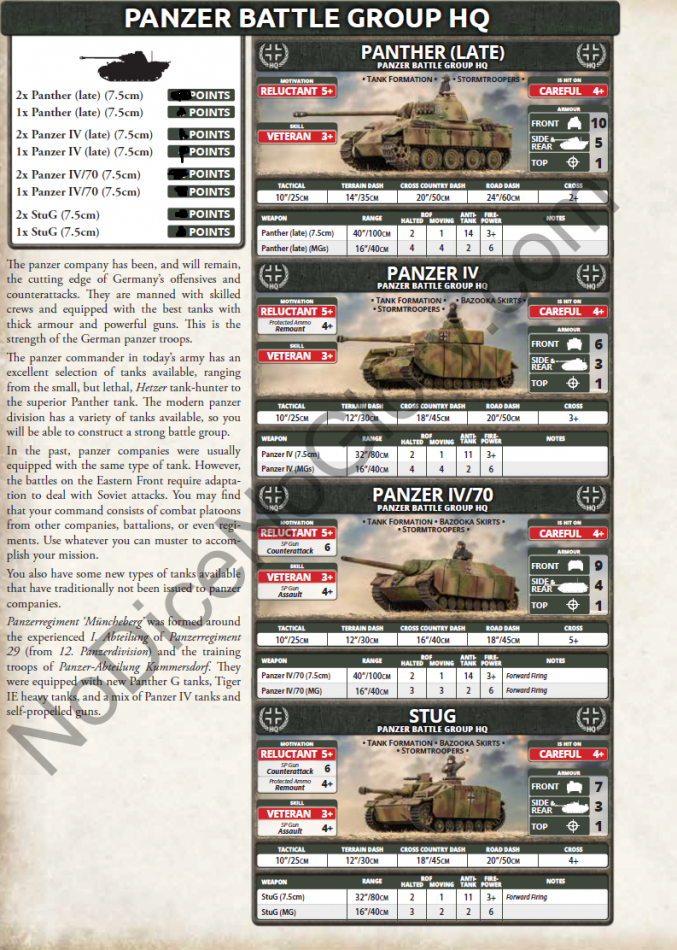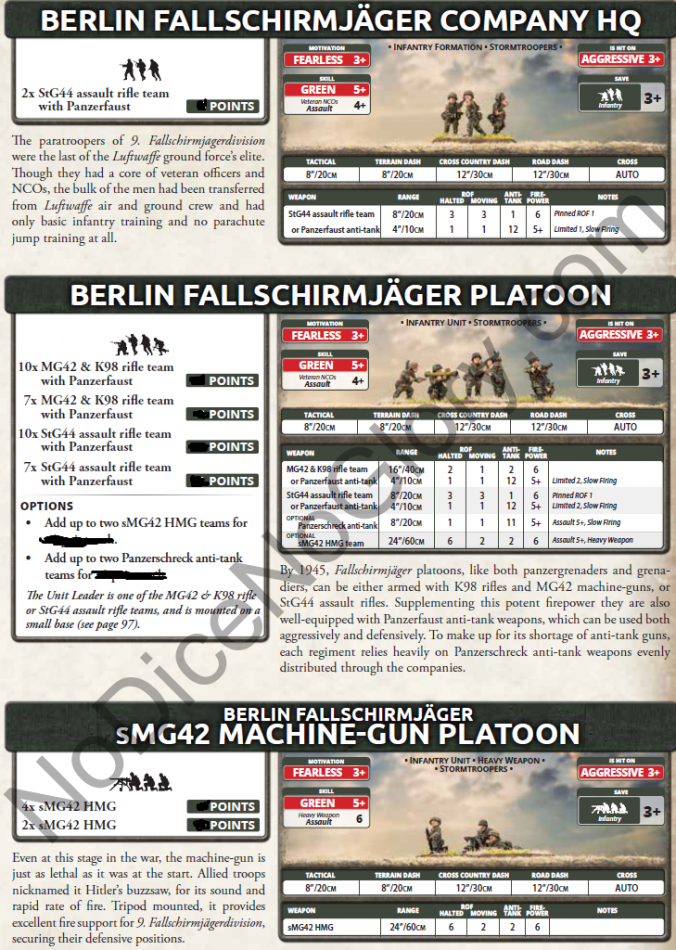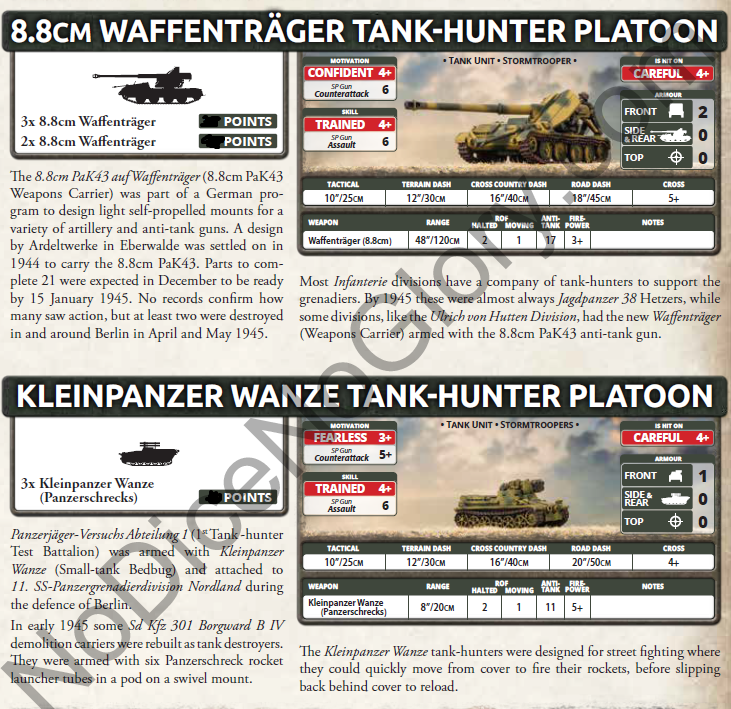Attero Dominatus: The German Army in Berlin
 By Michael Rafferty
By Michael Rafferty
“Enjoy the war, for the peace will be savage,” was a dark joke in the German Army during the last days of World War II. Now the walls are closing in and the Soviets are nearing Berlin. Germany is throwing every last man, woman, and child at them in a vain effort to stem the tide. With the Berlin German book, Battlefront has given us the last remnants of the German war machine that once held dominion over Europe.

This isn’t the German Army of 1939-1942 that overran Poland, France, and invaded the Soviet Union. This is an army built of the last bits of manpower and equipment Germany has left. Therefore, motivation and training levels will not always be that high. Panzerdivision Clausewitz makes a return. Existing for a month in April – May 1945, this was the last panzer division Germany formed. Equipped with Infra-red (IR) Panthers and Jagdpanthers, Panzerdivision Clausewitz is a tough unit.

The low morale makes them cheaper, if not likely to stick around. Rounding out this force is the classic Panzer IVs, Panzer IV/70, StuGs, and Panzergrenadiers. Clausewitz comes with Panther, StuG, and Panzersturm company options.

The Panzer Battle Group is an eclectic mix of every vehicle available to the late-war Germans. This list is meant to re-create the scratch and ad-hoc units the Germans were using at the time. This list gives every tank option available to late-war Germans: Panthers, Panzer IVs, Panzer IV/70s, StuGs, and Hetzers. These tanks retain the poor motivation of Panzerdivision Clausewitz, but still have veteran skill and are hit on fours.

The training companies have confident motivation, but green skill for the platoons and are hit on threes. On the plus side, cheap Tigers and Panthers in the Heavy Tank Training Company. These can be backed up with low-skill Panzer III and Panzergrenadiers. The regular Tank Training Company has the standard medium German tanks, and some returning favorites like the 1939 hit the Panzer II.

The 9th Fallschirmjagerdivison was one of the last parachute division, formed in December 1944. The division fought on the eastern front (basically the east part of Germany at this point) and at the Seelow Heights outside of Berlin. They retain the classic Fallschirmjager fearless rating, but are hit on threes and have green skill. They’re big 10 stand infantry platoons that can add two HMG and two Panzerschreck teams. A 14-team platoon is hard to move. They’re not going to be great in assault, but they’ll hold objectives very well.

The Berlin Battle Group is a hodgepodge of infantry units, just like the Panzer Battle Group. The HQ is fearless and veteran, but the units range from veteran panzergrenadiers to reluctant, green Volksturm. The Hitlerjugend are fearless, but green and are hit on twos. They’re cheap though and have panzerfausts, even though they’re going to struggle to hit anything in assault.

For support units, we have the normal tanks in both SS and Wehrmacht variants. We also see the return of the Waffentrager and Kleinpanzer Wanze, which are cheaper anti-tank options though they are relatively un-armored. Still, the Waffentrager has the long-barreled 88 with its anti-tank 17. The Wanze has a box of panzerfausts, which I find hilarious. The Berlin command cards give the option to mount Luftwaffe 88s on railway cars, which allows them to pseudo-ambush. ME-262 and JU-87 round out the support options with the last bits of the Luftwaffe.

Overall this is a book with a lot of options and customizable lists for the player. It’ll be interesting to see how these are used in tournaments. I can already see some interesting scenarios built with these ad-hoc formations and may be planning a Berlin game for future years.
